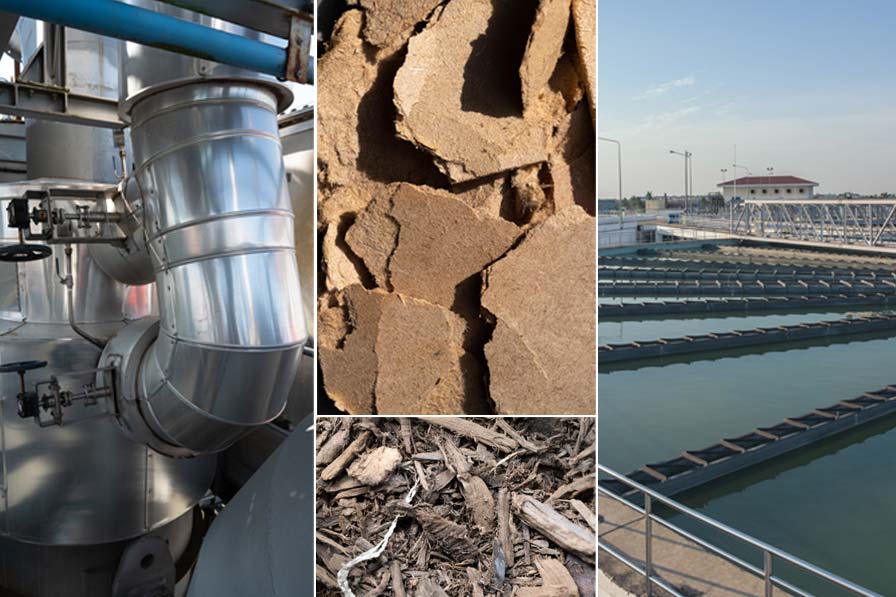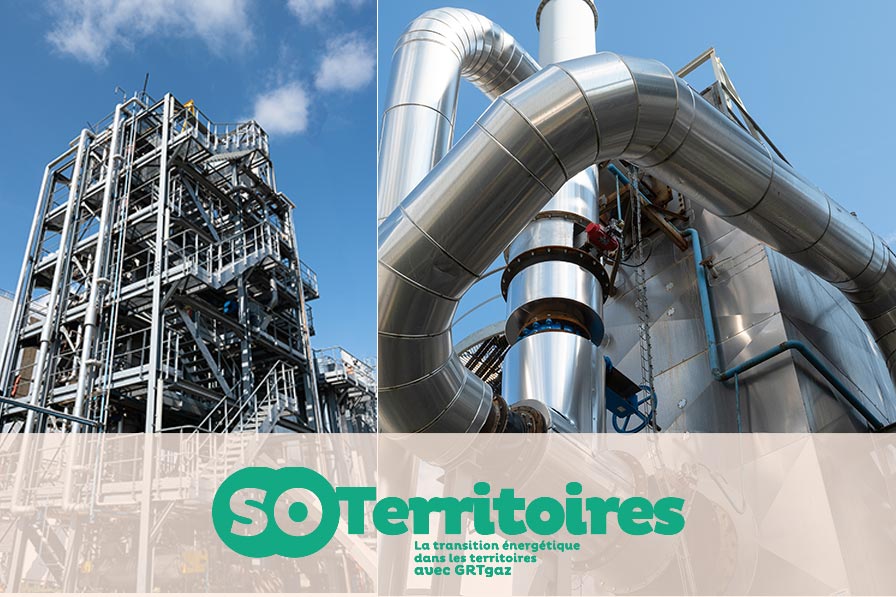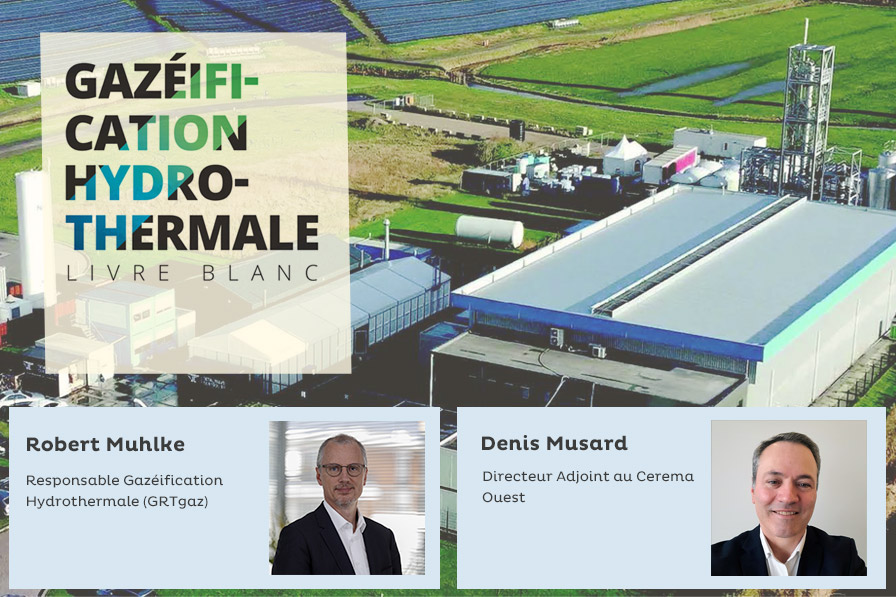Pyrogasification and hydrothermal gasification

As it did at the European Conference on Energy Transition, which just drew to a close, GRTgaz will be putting the spotlight on the essential role of renewable and low-carbon gases in France's future energy mix at the Expobiogaz trade fair in June. Current topics include the announced ramp-up of pyrogasification (gas production from solid waste) and hydrothermal gasification (gas production from liquid or wet organic waste) technologies. Let's take a closer look.
With more than 500 units injecting gas into the French gas networks, anaerobic digestion has paved the way for the production of renewable gases and is asserting its maturity. In its wake, two new complementary sectors are coming into being, and are promised a bright future: pyrogasification and hydrothermal gasification.
“The sector is beginning to reap the benefits of in-depth day-to-day work, led in particular by the Pyrogasification Club of the Association Technique Energie Environnement (ATEE).”Said Kheloufi
Responsable filière pyrogazéification chez GRTgaz
Gas production from solid waste in the starting blocks
Pyrogasification is an innovative technology for producing renewable, low-carbon gas that can be injected into existing gas networks. It is a so-called thermochemical process for converting matter, in which solid waste is heated to very high temperatures (up to 1,500°C) to produce a gas called syngas, composed mainly of methane and hydrogen. When the technological building blocks for anaerobic digestion* and the purification of this syngas are combined, the result is a methane that can be injected into existing gas transmission networks.
*A process by which the gaseous molecules produced from various types of waste are recombined to produce methane that can be fed into the grid.
What are the advantages of pyrogasification?
In keeping with the hierarchy of waste treatment methods (avoid waste, reuse, recycle, recover as energy, etc.), this process makes it possible to transform residues and solid waste that are currently little or poorly recovered into renewable, low-carbon gases: non-recycled plastics, wood waste or even solid recovered fuels (SRF).
This means that pyrogasification can be used for a wide variety of solid residues that cannot currently be recycled. Another positive point is that, considering the inputs targeted, it does not compete with methanisation or hydrothermal gasification (see below). “This technology is an supplementary recovery solution offered to industrial companies or local authorities”, explains Said Kheloufi, head of the pyrogasification sector at GRTgaz. It contributes to the objectives of the circular economy and landfill reduction, with high production yields, a reduced carbon footprint for the energy produced and lower emissions of pollutants, with a major reduction in smoke and fine particles in particular.
6 TWh projected for injection by 2030
The sector brings a large number of players into the fold: the waste sector, industry and local authorities in every region of France. Looking ahead to 2030, according to the network operators' forecasts, based on the ambitions set out in the regional plans, pyrogasification could recover almost 3 million tonnes of waste per year, corresponding to the injection of 6 TWh of renewable, low-carbon gas into the networks. By way of comparison, anaerobic digestion enabled the injection of 7 TWh of biomethane in 202211.
"Pyrogasification has everything it takes to become the second pillar of renewable and low-carbon gas production, with a production potential of 90 TWh of gas injected by 2050, which will help to achieve the objective of a neutral gas mix in France by that date," says Clotilde Villermaux, pyrogasification project manager at GRTgaz.
So where does the project stand now?
When it comes to technical development, “semi-industrial trials have demonstrated the energy and environmental performance of this technology and the quality of the gas obtained. In the industrialisation phase, “the industry is in the starting-blocks for the first commercial unit”, says Clotilde Villermaux. Especially as it will reach a decisive stage after the summer of 2023, with the launch by the public authorities of a call for projects enabling a support mechanism for the production of injected methane for the first commercial units. A first official recognition in the wake of the call for expressions of interest (AMI) "Pyrogasification for injection" run by GRTgaz in 2022. “The sector is beginning to reap the benefits of in-depth day-to-day work, led in particular by the Pyrogasification Club of the Association Technique Energie Environnement (ATEE)”, informs Said Kheloufi.
The first industrial units are expected to be up and running in France by 2026.
>> Open data mapping of pyrogasification projects underway in France
“We have a cutting-edge technology that is just breaking through, with a first industrial project about to be launched by SCW Systems in the Netherlands. To achieve the same in France, we now need the support of the public authorities, and the momentum will be there."Robert Muhlke
Head of Hydrothermal Gasification at GRTgaz
Producing gas from liquid or wet organic waste: a highly promising technology
Alongside pyrogasification, hydrothermal gasification is the other disruptive technology to watch. This innovative high-pressure (210 to 350 bar), high-temperature (360 to 700°C) thermochemical conversion process can be used in this context to convert liquid, wet and dry organic waste (the latter requiring a unique water input). The result is renewable, low-carbon gases that can be injected, as well as inorganic co-products that can be recovered and recycled (minerals, metals, nitrogen and/or water, depending on the waste being recycled).
What are the advantages of hydrothermal gasification?
There are many. The process enables the recovery of a wide variety of waste, originating from all geographical areas and sectors: industry, the waste sector, agriculture and urban activities in the broadest sense. It can be agricultural or industrial effluent, sludge from wastewater treatment plants, bio-waste from the catering industry, digestate from methanisers, soiled plastics or waste from the chemical and petrochemical industries, alone or in mixtures. A further major strength of the process is that it destroys virtually all the pollutants and pathogens found in these inputs, including PFAS*, the particularly toxic "eternal pollutants".
*Per- and polyfluoroalkyl substances” are a family of synthetic chemical substances
The prospect of 63 TWh/year of injectable gas by 2050
According to industry projections, hydrothermal gasification could produce at least 63 TWh/year of renewable, low-carbon, injectable gas (from the 18 largest biomass waste deposits) by 2050. All regions of France are expected to benefit, with Nouvelle Aquitaine (9.6 TWh/year) leading the way, followed by Hauts de France (8.3 TWh/year) and Pays de la Loire (7.9 TWh/year)2.
So where does the project stand now?
The years 2023 and 2024 will be decisive for the sector's take-off. In February 2023, the National Hydrothermal Gasification Working Group published the world's first-ever white paper on the subject, raising the profile of the sector. In parallel, two industrial demonstrator projects are being developed in France, including a large-scale project (2 t/h) in Saint-Nazaire, based on the technology being developed by Leroux & Lotz Technologies. In partnership with CARENE, the Metropolitan Authority of Saint-Nazaire, it will process sludge from the local wastewater treatment plant, along with other waste. The second, a smaller mobile pilot plant (around 150 kg/h), is run by VINCI Environ.
What's next? GRTgaz and the industry hope to launch a call for expressions of interest by the end of the year, to “encourage players to get involved and enable the first projects to come on stream by 2026/2027”, says Robert Muhlke. “We have a cutting-edge technology that is just breaking through, with a first industrial project about to be launched by SCW Systems in the Netherlands. To achieve the same in France, we now need the support of the public authorities, and the momentum will be there." Between now and 2030, the industry aims to build and commission around 60 projects, producing a total of at least 2 TWh/year of gas that can be fed into the grid.
Sources:
1 Bilan Gaz 2022 [Gas Sector Review], GRTgaz
2 White Paper on Hydrothermal Gasification, GRTgaz, 2022

Titan V: when local waste becomes renewable gas
